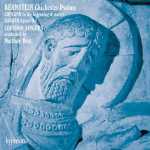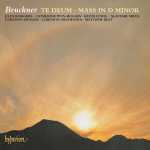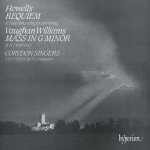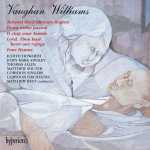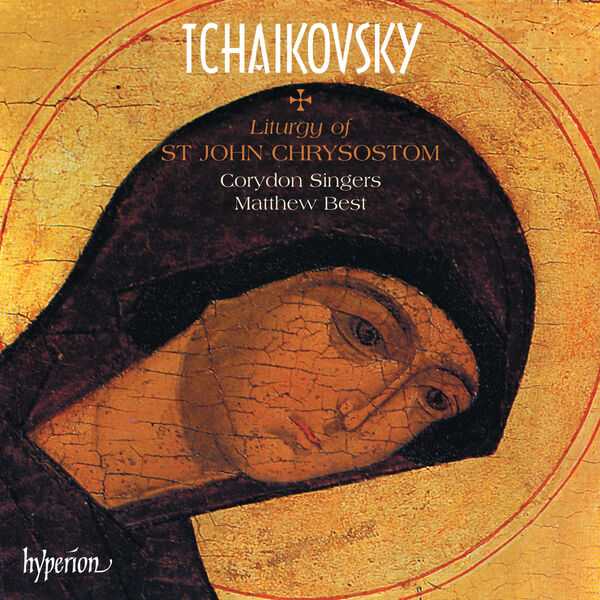
Composer: Pyotr Il’yich Tchaikovsky
Performer: Corydon Singers
Conductor: Matthew Best
Format: FLAC (tracks)
Label: Hyperion
Catalogue: CDH55437
Release: 1997
Size: 279 MB
Recovery: +3%
Scan: yes
Nine Sacred Choruses (1884 / 5)
01. I. Kheruvimskaya pesnya ‘The Cherubic Hymn’ in F major
02. II. Kheruvimskaya pesnya ‘The Cherubic Hymn’ in D major
03. III. Kheruvimskaya pesnya ‘The Cherubic Hymn’ in C major
04. IV. Tebe poem ‘We praise you’
05. V. Dostoyno est ‘Hymn to the Mother of God’
06. VI. Otche nash ‘Our Father’
07. VII. Blazhenni yazhe izbral ‘Blessed are they’
08. VIII. Da ispravitsya ‘Let my prayer’
09. IX. Nyne sily nebesnyya ‘Now the powers of heaven’
10. Angel vopiyashe ‘The angel cried’
Liturgy of St John Chrysostom, Op. 41
11. I. Slava Otsu, i Synu ‘Glory be to the Father, and to the Son’
12. II. Priidite, poklonimsya ‘Come, let us worship’
13. III. Kheruvimskaya pesnya ‘The Cherubic Hymn’
14. IV. Veruyu ‘The Creed’
15. V. Milost mira ‘A mercy of peace’
16. VI. Tebe poem ‘We praise you’
17. VII. Dostoyno est ‘Hymn to the Mother of God’
18. VIII. Otche nash ‘Our Father’
19. IX. Khvalite Gospoda ‘Praise the Lord’
20. X. Blagosloven gradyy ‘Blessed is he who comes’
‘There is nothing like entering a church on a Saturday, standing in the semi-darkness with the scent of incense wafting through the air, lost in deep contemplation searching for an answer to those perennial questions, wherefore, when, whither and why?’
These words, from one of Tchaikovsky’s own letters, sum up the spirit behind the glorious Liturgy of St John Chrysostom, Op 41. The work is steeped in the Orthodox tradition, the choral writing provides that sense of transparency and simplicity demanded by the text, and the resulting ambience is rich in the manner familiar to Western listeners from works such as Rachmaninov’s Vespers.
This recording also includes ten choruses to texts many of which are taken from the Liturgy. The first nine were published together in 1885, while the tenth, The angel cried, was lost shortly after its first performance in 1887 and only rediscovered thirteen years after the composer’s death.
